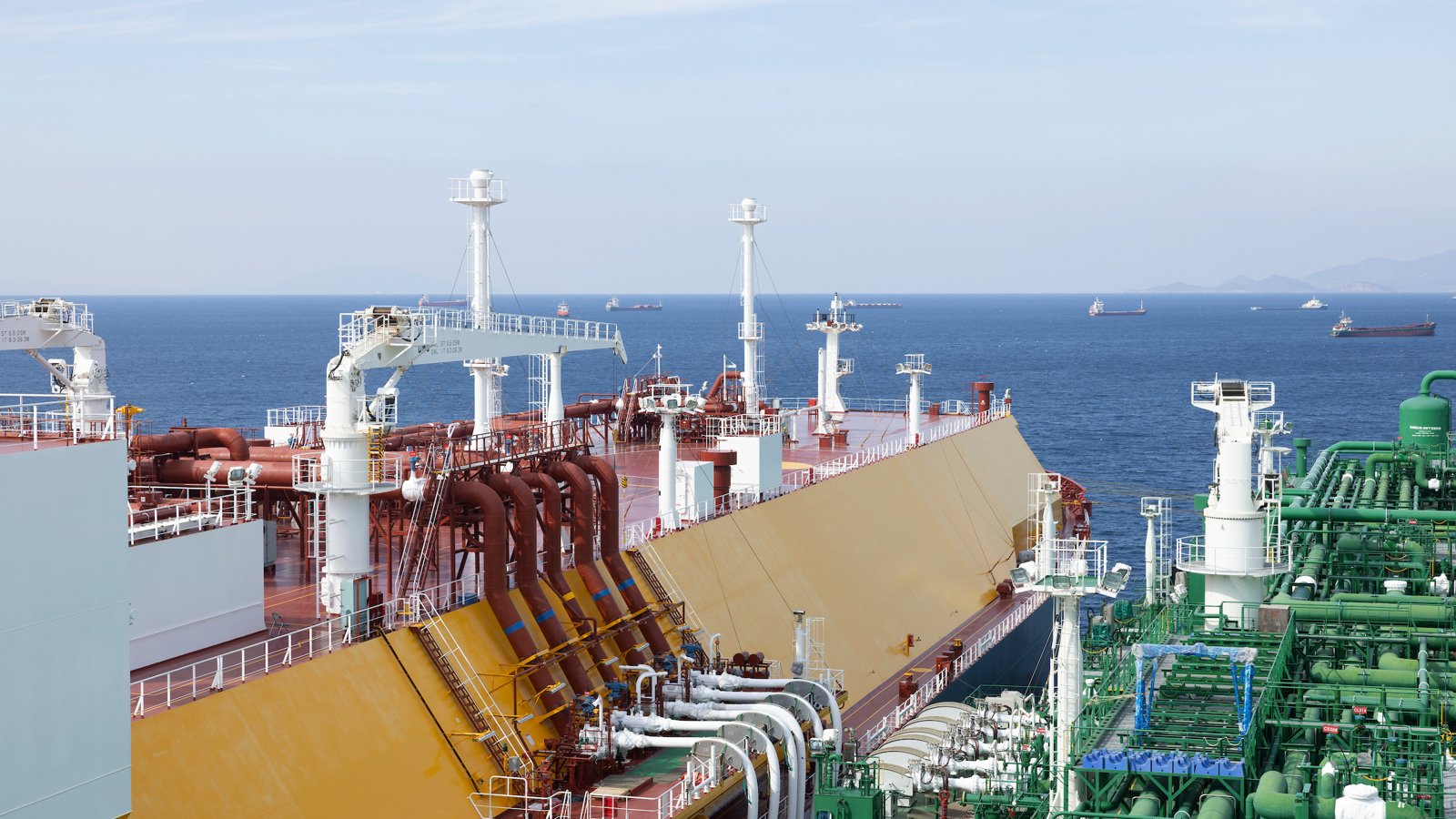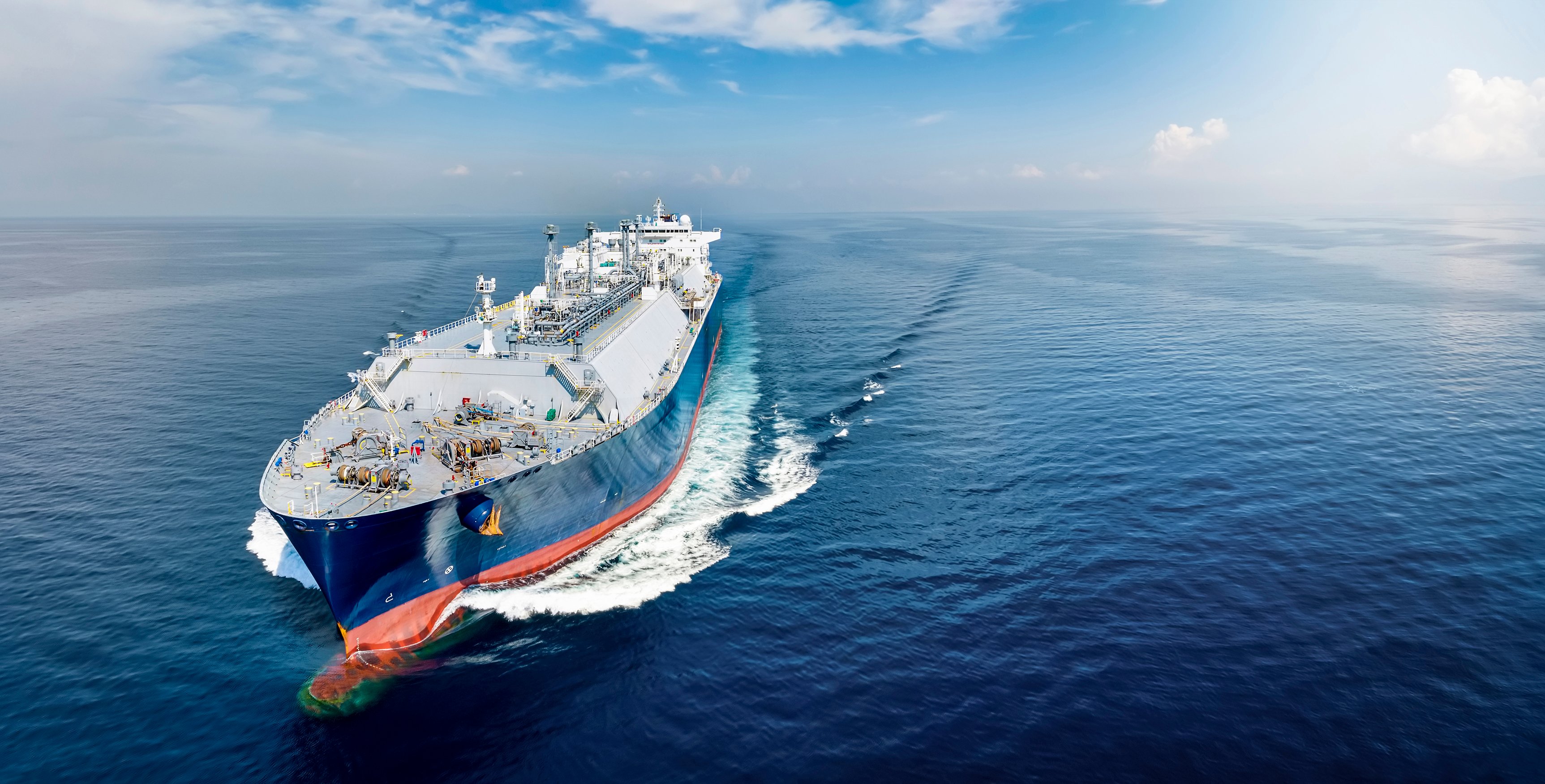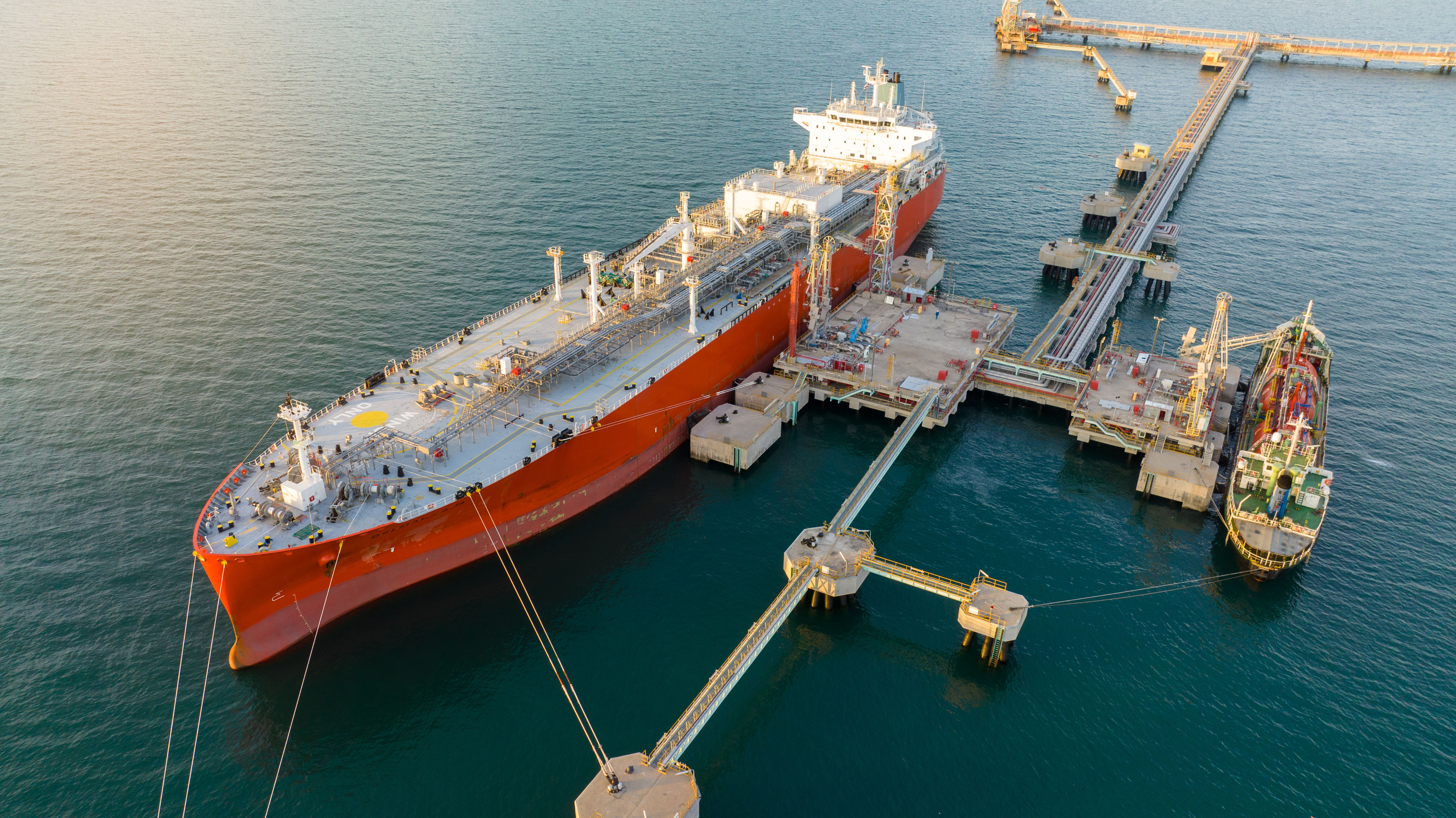Understand the Mechanics: How Do LNG Ships Work

Wilhelmsen insights
|
Wilhelmsen Ship Management
Liquefied Natural Gas (LNG) carriers are crucial in the demands of global energy transport system, which facilitates the transfer of LNG across immense distances effectively and safely. Studying LNG ships provides awareness of shipping operations in the context of the present world, which is striving for non-reliance on fossil fuels, the marine transport industry, and changes in contemporary infrastructure.
What is an LNG (Liquefied Natural Gas) Ship?
An LNG ship is a tanker or carrier and a marine vessel used for the bulk transportation of liquefied natural gas (LNG). These ships are designed to transport LNG, which is natural gas liquefied by cooling to as low as -162 (°C)/ -260 (°F), thus occupying 1/600th of the volume in the gaseous state. This liquefaction process enables the transport of large volumes of natural gas, where transportation can’t be carried out through pipelines, due to geographical or economical restrains.
Primary Function of LNG Ships
The primary purpose of LNG ships is to deliver natural gas from production and export zones, normally where it is abundant, to the consumption and import zones where there is no locally sourced supply. In production centres, the LNG is stabilized for transportation in liquefaction plants that process natural gas into LNG. After liquefaction, the LNG is transported by LNG ship from the exporting country terminals. These ships then move across seas to the import terminal, where LNG is discharged from the Ship to Shore storage tanks or Ship to Floating Storage and Regasification units (FSRU) transfers. Which can later be transformed into gaseous form, and delivered through pipelines for domestic use in homes, power generation and other industrial uses.
Significance of LNG Transportation in the Energy Industry
LNG transportation is crucial in the energy industry for several reasons:
- Energy Security: LNG ships ensure that countries that cannot produce natural gas or do not have an established energy source can benefit from a stable and diverse supply. Through LNG imports, these countries can also decrease their exposure to regional suppliers and ensure energy security.
- Market Flexibility: As LNG ships trade Worldwide, offering flexibility in natural gas marketing and supplies, that can enable adequate resilience to change in global demand and prices. This flexibility helps resolve the conflicts in supply and demand that may be present in different geographical locations.
- Environmental Benefits: LNG is a cleaner-burning substance relative to coal and oil, generating lower carbon dioxide, sulphur oxide, and nitrogen oxide emissions. These ships consume LNG (Natural Boil off during transportation) as fuel, thus decreasing the dependence on conventional Fossil fuels and strain that energy usage puts on the environment.
- Economic Impact: The LNG industry acts like a catalyst for employment, infrastructure, and trade revenue, which is an advantage. The difficulties in the construction and operations of the LNG shipping vessels, the liquefaction plants, and the regasification terminals are associated with significant economic benefits.
How do Liquefied Natural Gas Ships work?
Operational Processes of LNG Ships:
1. Loading
- Terminal Preparation: LNG carrier with advanced infrastructure is loaded at specialized LNG terminals, including large Cryogenic Storage tanks, loading arms and other associated equipment. These terminals are designed to handle the complexities of LNG handling including emergency mooring release and emergency disconnection of Loading arms.
- Cargo Handling Plans: Detailed Cargo handling plans are developed before loading begins. These plans specify the initial Warm/ Cold ESD tests, Cargo flow rates, Vapour return to Shore for maintaining Tank pressures, sequence of tank filling, safety responsibilities, communication protocols and emergency procedures. Coordination between the ship and terminal staff is critical for a smooth operation, using Ship/ Shore Link (SSL) for Communication and emergency preparedness.
LNG carriers are equipped with CTS (Custody Transfer System) using Radar tank Gauging, temperature and pressure monitoring system to provide continuous and reliable accuracy of Cargo transferred. - Cryogenic Pumps and Loading Arms: LNG is loaded into a ship from shore storage tanks using cryogenic pumps and loading arms. These are specifically custom-built loading arms to handle LNG, which have capability of Emergency Disconnection, if required, due to any critical operating condition which can trigger the Emergency Shut Down Systems (ESDS).
2. Transportation
- Specialized Containment System: These specialized, insulated tanks contain LNG, keeping it cold and facilitating gas transport and delivery from one facility or vessel to another. As of today, marine stakeholders can choose from 4 (Four) types of Cargo Containment Systems, each with its own benefits, challenges and applications. All Systems are subject to the International Code of the construction and Equipment od ships carrying Liquified Gases in Bulk i.e IGC Code.
- Second Barrier Design: The LNG ship with “Type A” tanks install a complete Secondary barrier to provide insulation and Leak detection, “Type B” Tanks have partial Secondary barrier for “Leak before failure” principle. “Membrane Tanks” are designed with two thin membranes that act as barriers and are supported by layers of insulation, the thick inter barrier and insulated spaces enables to maintain low temperatures and detection of any leakage by monitoring for hydrocarbons.
- Inert Gas System: Nitrogen breathing / sweeping of the insulation spaces are key features on ships with Membrane containment systems. The Mixture that has circulated in these spaces is analysed for possible Hydrocarbon content.
- Sophisticated Monitoring Systems: During the voyage, Radar Level sensors and Various Instrumentation systems continuously monitor the temperature, pressure and Quantity of LNG stored within the tanks. These systems guarantee that any abnormal occurrences or conditions are spotted and rectified to maintain flawless operation.
3. Unloading
- Terminal Facilities: These Specialized facilities have infrastructure for handling LNG including Cryogenic Cargo loading arms, Pipelines, Storage tanks, regasification facilities also some terminals provide transshipment facilities for Ship-to-Ship transfers.
- Cargo Transfer: The unloading process includes connecting the manifold on the ship with terminal unloading arms. LNG Ships are equipped with Cryogenic Submerged Electric Centrifugal Cargo pumps, using which the LNG is transferred from Ship’s Pipelines to the terminal’s unloading arms onwards to Shore storage tanks or another ship’s tanks. The quantity of cargo transferred is confirmed using CTS (Custody Transfer System) which are Calibrated/ Certified.
- Regasification: Terminal facilities which are either shore based or FSRU (Floating Storage and Regasification Units) receive the LNG, where the LNG is returned to the gaseous phase through regasification processes. This gas is then transported to the company's local natural pipeline network for distribution and utilization.

Key Mechanisms for Maintaining Cargo Integrity During Transit
- Insulation and Temperature Control: Maintaining LNG's cryogenic temperature is essential to prevent it from re-gasification. The tanks are heavily insulated with advanced materials that minimize heat transfer. The ship's systems also continually monitor and adjust the tank temperature to maintain the LNG in its liquid state.
- Pressure Management: As LNG warms slightly during transit, it creates Natural boil-off gas (NBOG). Pressure control systems manage this gas which include Reliquification units and GCU (Gas Combustion Units). Modern LNG ships use this boil-off gas as a supplementary fuel source for the ship's propulsion and Electricity Generating system, thereby reducing waste and improving efficiency.
- Manifold Connection and Safety Procedures: During loading and unloading, the connection between the vessel and the terminal is secured with robust manifolds and hoses designed to withstand extreme cold and high pressure. Safety checklists and Emergency Shut Down Systems (ESDS) are in place to handle any incidents that may arise during these operations.
- Emergency Shutdown Systems: Both the ship and the terminals are equipped with emergency shutdown systems that can quickly halt the flow of LNG if a problem is detected. Both Ship and Shore are connected during these operations with Ship – Shore Links (SSL) using either/or/and Optical / Electrical / Pneumatic connections. These systems include automated valves and safety protocols to prevent spills and other hazards.
Understanding the different LNG Carrier types
LNG carriers are specialized vessels, that transport liquefied natural gas (LNG) over long distances. As the global demand for natural gas continues to grow, the importance of these ships in the energy supply chain becomes increasingly evident. The design of the containment system within LNG carriers is crucial for ensuring the safe and efficient transport of this cryogenic cargo. Among the various containment systems used, membrane and spherical tank designs are the most prevalent. Each type has distinct characteristics, advantages, and operational considerations that make them suitable for different scenarios.
Membrane Tank Designs
- Characteristics and Advantages
Due to their efficiency and capacity, membrane tank designs are a common choice for LNG carrier. These tanks feature thin, flexible membranes of materials like stainless steel or Invar, supported by insulation layers. The membrane is only a few millimetres thick and is designed to contain the LNG directly. - Advantages:
- High Capacity Utilization: Tanks for membranes can be shaped to fit the ship's hull, maximizing cargo capacities.
- Efficient Space Usage: The ability of membrane tanks to conform to the ship's structure means they make better use of the available space compared to spherical tanks.
- Lightweight: The thin membrane and insulation layers result in a lighter overall structure, reducing the vessel's weight and potentially increasing fuel efficiency.
- Operational Considerations
Operating an LNG carrier with a membrane tank involves several unique considerations:- Thermal Contraction Management: When the LNG is cooled to cryogenic temperatures, the membrane must withstand significant thermal contraction. Designs such as the TGZ MARK III use a 'waffle pattern' to absorb these contractions.
- Leak Detection: Continuous monitoring for leaks is crucial. Systems like the GT96 design include a double membrane with a layer of nitrogen flushing between them to detect hydrocarbon leaks.
- Maintenance and Inspection: Regular inspection and maintenance are essential to ensure the integrity of the membrane and insulation layers. Any damage or wear can compromise the containment system.
Spherical Tank Designs
- Features and Operational Aspects
Spherical tank designs, also known as Moss tanks (named after the Norwegian company Kvaerner Moss), are another prevalent type of LNG containment system. These tanks are distinct for their robust, spherical shape, providing structural integrity and internal pressure resistance. - Features:
-
- Robust Structure: The spherical shape evenly distributes stress, making the tanks highly resistant to internal pressure and external forces.
- High Safety Margin: The design allows for a higher margin of safety in various operating conditions, including rough seas and emergencies.
- Operational Aspects:
-
- Safe against Sloshing: Moss tanks is ideal for partial loading. The Spherical shape ensures that partial loadings will not cause sloshing problems, no filling restrictions.
- Ease of Inspection: The external placement of these tanks simplifies inspection and maintenance, as the spherical tanks are more accessible than membrane tanks.
Differences Between Membrane and Spherical Tank Designs
- Design and Structure:
-
- Membrane Tank: These tanks utilize thin, flexible membranes supported by insulation layers that conform closely to the ship's hull. This design maximizes cargo capacity and reduces the vessel's weight.
- Spherical Tanks: Feature rigid, spherical shapes that are self-supporting and provide excellent structural integrity. These tanks do not conform to the hull's shape, resulting in less efficient use of space.
- Capacity and Space Utilization:
-
- Membrane Tank: Offer higher capacity utilization due to their ability to fit the ship's hull precisely, making them ideal for larger LNG carriers.
- Spherical Tanks: Occupy more space due to their shape and support structure, resulting in a lower cargo capacity relative to the ship's size.
- Operational Considerations:
-
- Membrane Tank: Require advanced thermal contraction management and continuous leak detection systems. They are more susceptible to damage but offer higher efficiency.
- Spherical Tanks: Provide easier inspection and maintenance access and have a higher safety margin, but they sacrifice some efficiency

Classification of LNG Carriers
Based on Pressurization
LNG carriers can be classified according to the pressurization of their cargo tanks. This classification influences the design and operation of the vessels:
- Pressurized:
- These carriers transport LNG at pressures higher than atmospheric pressure. The tanks are designed to handle increased pressure, typically above 2000 mbar range.
- Usage: Pressurized LNG carriers are less common and are generally used for small-scale LNG transportation and short distances.
- Advantages: Maintaining LNG in a liquid state without extensive cooling infrastructure can benefit specific operational needs.
- Semi-Refrigerated:
- These carriers operate with both pressurization and refrigeration. The LNG is maintained at moderately low temperatures and moderate pressures.
- Usage: Semi-refrigerated carriers are versatile and can be used for various cargoes, not limited to LNG. They are often used in regional trades where infrastructure constraints exist.
- Advantages: Moderate cooling and pressure handling allow for operation and cargo-type flexibility.
- Full-Refrigerated:
- Description: These carriers maintain LNG at cryogenic temperatures (approximately -162°C or -260°F) near atmospheric pressure.
- Usage: Full-refrigerated LNG carriers are the most common type for large-scale, long-distance transport of LNG.
- Advantages: This method ensures maximum LNG volume reduction, optimizes cargo capacity, and makes it ideal for international shipping.
Based on Hazard Level
According to Clarksons, LNG carriers are also classified based on the hazard level of the transported material. This classification is crucial for ensuring safety and compliance with international regulations:
- Type 1G:
- Designed to carry the most hazardous cargo.
- Usage: These ships are constructed with the highest safety standards, including robust containment and emergency systems.
- Examples: Typically used for the transport of highly toxic or reactive gases.
- Type 2G and 2PG:
- Designed to carry cargo with a lesser degree of hazard.
- Usage: These vessels still adhere to strict safety protocols but are optimized for cargoes that pose less risk than those carried by Type 1G.
- Examples: Often used for less toxic or less reactive gases.
- Type 3G:
- Designed to carry the least hazardous cargo.
- Usage: These carriers are built with standard safety measures for handling less hazardous materials.
- Examples: Commonly used for non-toxic and non-reactive gases, including LNG, under normal conditions. (Source: https://www.clarksons.com)
Based on Cargo Tank Design
LNG carrier can also be classified based on the type of cargo tanks they use. This classification affects the ship's construction, cargo capacity, and operational efficiency:
- Independent Tanks:
- These self-supporting tanks do not form part of the ship's hull structure. They are often used in spherical (Moss) and colourful (Type B) tank designs.
- Advantages: High structural integrity and ease of maintenance and inspection. The spherical tanks distribute stress evenly, making them highly durable.
- Usage: Common in large LNG carriers, providing robust and reliable containment.
- Integral Tanks:
- These tanks are integrated into the ship hull and rely on the hull structure for support. Membrane tank are a typical example of this design.
- Advantages: Maximizes cargo capacity by allowing the tanks to conform to the shape of the ship hull. They are lightweight and efficient for large-scale LNG transport.
- Usage: Widely used in modern LNG carrier due to their capacity and efficiency benefits. (Source: https://www.marineinsight.com)
Liquefied Natural Gas (LNG) ships are integral to the global energy supply chain, enabling LNG's efficient and safe transportation across vast distances. Understanding these aspects of LNG vessels is crucial for industry professionals and stakeholders. It ensures the selection of the appropriate carrier type, adherence to safety standards, and optimization of operational efficiency. As the demand for natural gas continues to rise, knowledge of the mechanics and classifications of LNG ships will play a vital role in supporting this critical energy resource's sustainable and secure supply. Contact us today for professional ship management services.